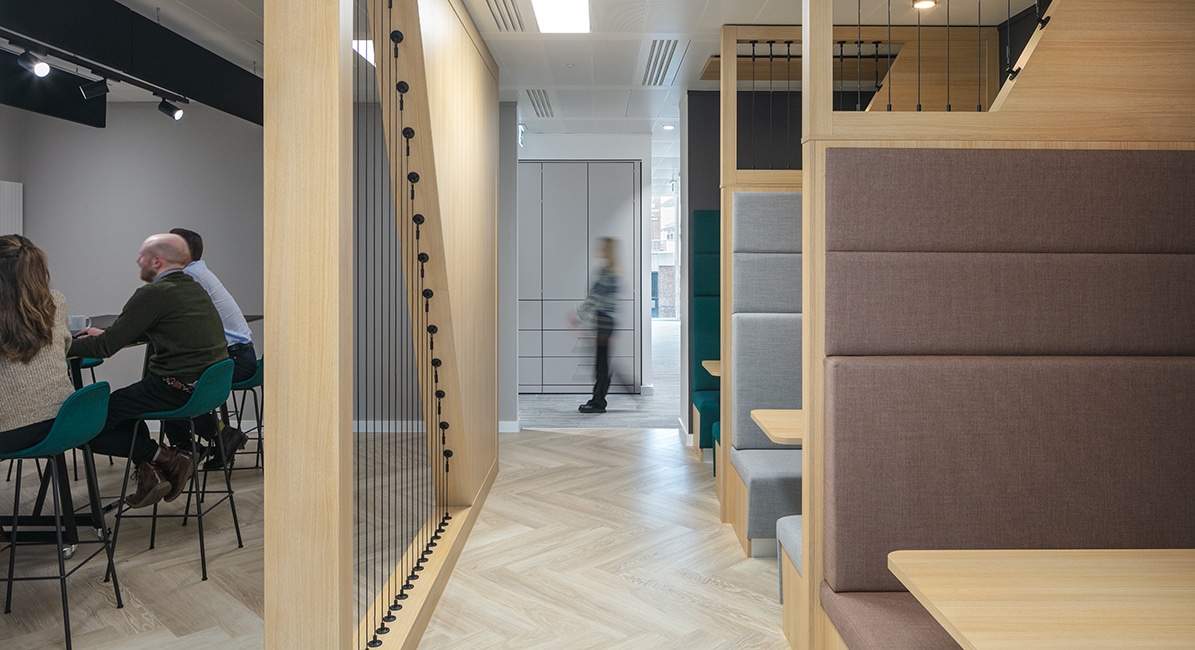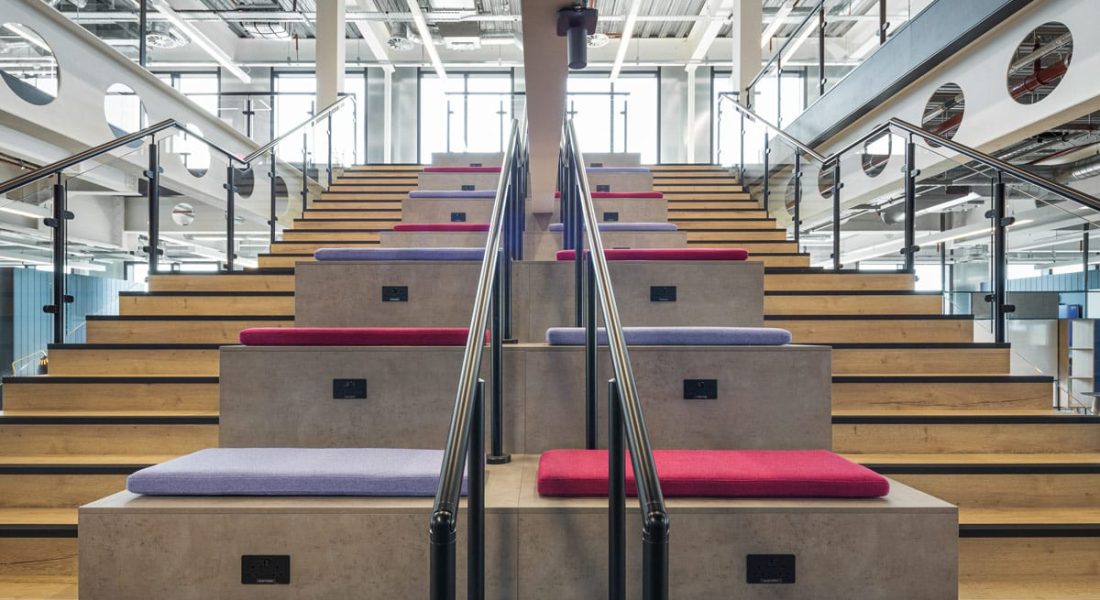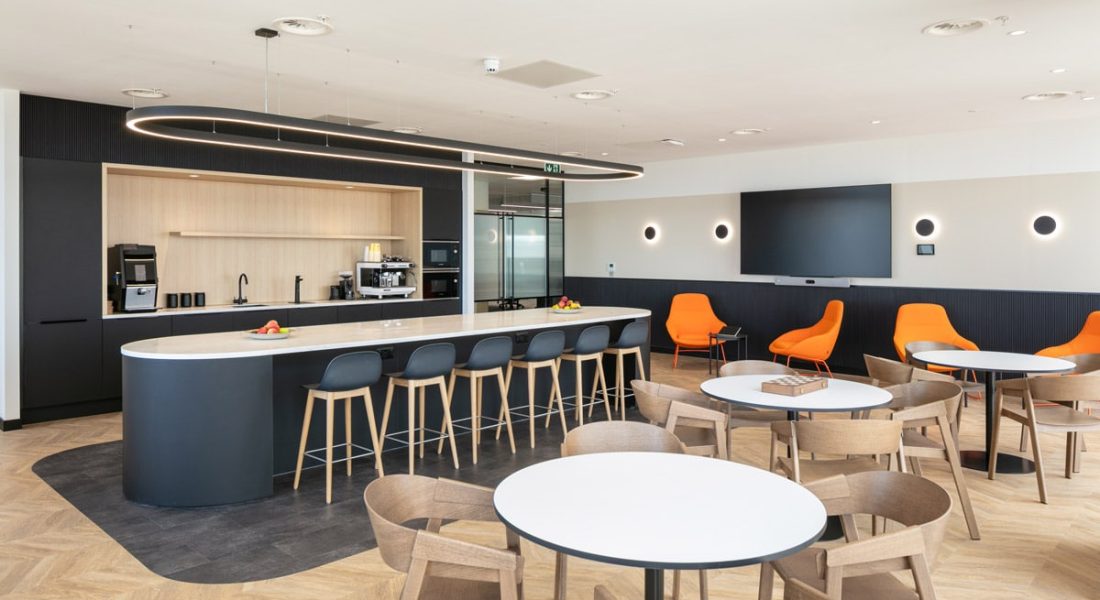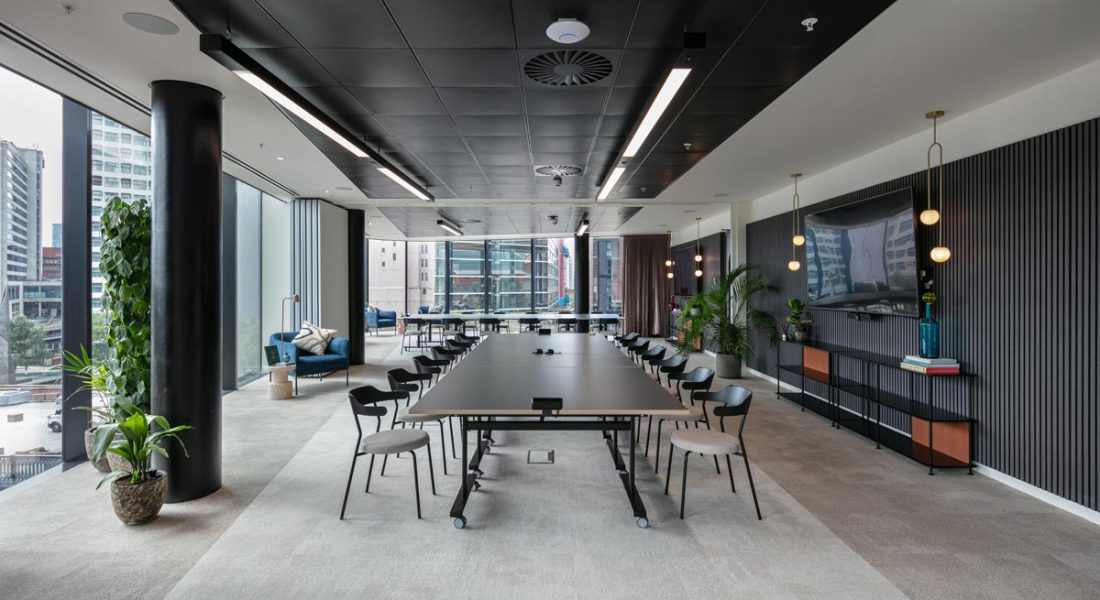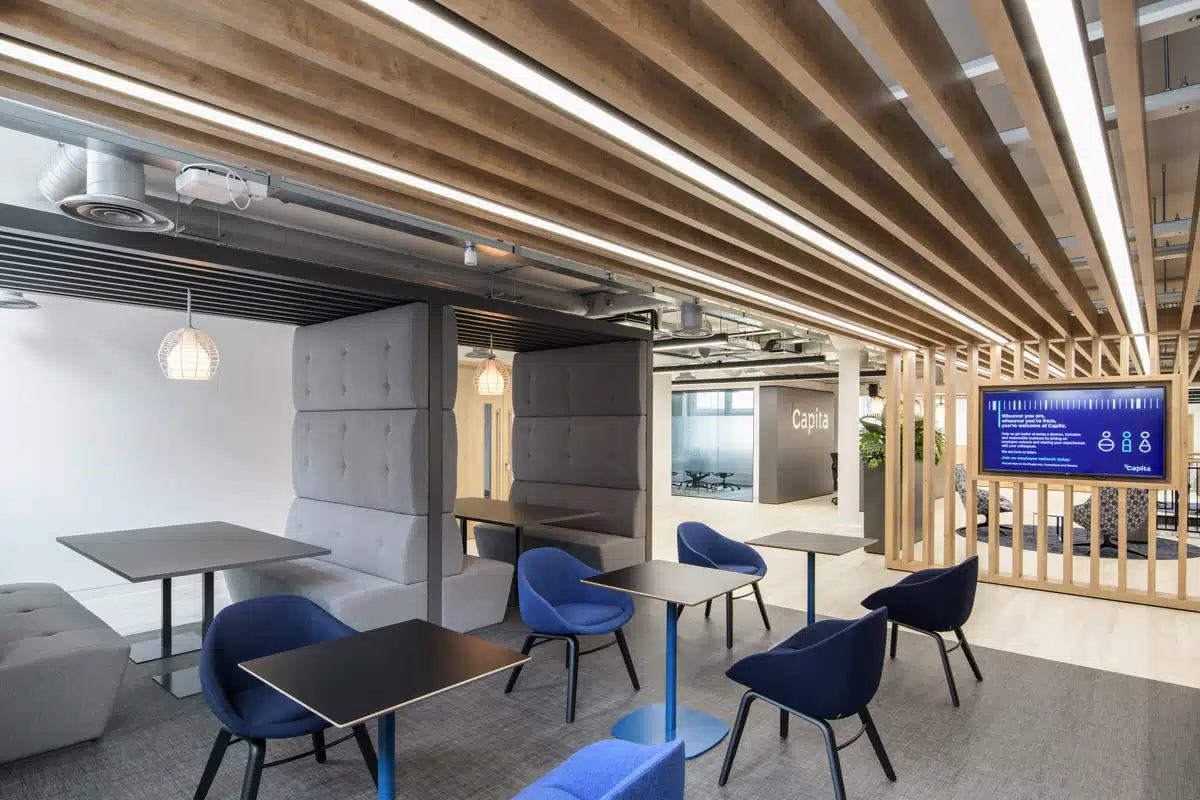What Are Workplace Rituals?
Rituals are the repeated, shared behaviours that give structure to a team’s working life. Unlike policies or formal processes, they are informal by nature, yet central to company culture. These might include:
- Daily stand-up meetings
- Monday morning planning sessions
- Friday afternoon wrap-ups
- Midweek team lunches
- Quiet hours for focused work
- Monthly town halls
These habits promote connection, alignment, and rhythm. Designing spaces that support these routines ensures they happen naturally and consistently.
Aligning Rituals with Spatial Design
Dedicated Zones for Collaboration
Flexible Social Areas
Quiet Zones for Routine Focus
Embedding Culture Through Material and Movement
Cultural rituals also shape how people move through and experience a workplace. The flow between zones should reflect daily behaviours. For example:
- Circulation paths can connect project teams more naturally.
- Visibility between departments fosters transparency.
- Clear zoning guides employees from arrival to collaboration to concentration.
Beyond layout, finishes and materials play a part. Natural textures in communal zones might support relaxation. Subtle lighting shifts between focus areas and social spaces create atmosphere without distraction.
Supporting Rituals in Hybrid Work Models
In hybrid settings, rituals remain important—but need spatial and digital support. Offices should be equipped for scheduled team days, with adaptable spaces that suit in-person rituals. Features might include:
- Hot-desking tools with proximity preferences
- Tech-enabled meeting rooms for hybrid stand-ups
- Shared planning walls that persist across days
These solutions help maintain the ritual even when teams aren’t co-located all week.
Design Process: From Discovery to Implementation
Understanding company rituals begins with workplace consultancy. Through surveys, workshops, and usage data, the design team can map which habits exist and which should be encouraged. From there, planning begins:
- Discovery – Identify current and aspirational rituals.
- Zoning – Create purpose-built areas that reflect those habits.
- Integration – Weave rituals into broader cultural and operational goals.
- Iteration – Adjust design as rituals evolve with team behaviours.
This approach ensures that fit-outs deliver more than functionality—they embed the way your team works and connects.
Why It Matters
Conclusion
Workplace rituals shape team identity, productivity, and cohesion. Designing for them isn’t a cosmetic decision—it’s a strategic one. By building cultural routines into the floorplan, businesses create environments where people can thrive.
At ADT Workplace, we take the time to understand your organisation’s unique rhythms and routines. Through thoughtful design and fit-out, we help bring your culture to life—right from the floorplan.

